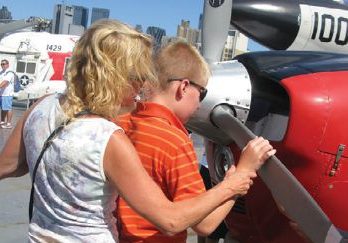
This article originally appeared in the September/October 2015 issue of Museum magazine.
A story of accessibility and inclusion
The “Visitor Voices” session at the 2015 AAM Annual Meeting & MuseumExpo in Atlanta featured stories and perspectives from museum visitors with low vision, hearing loss, autism and dementia, and discussion of how museums have responded. Session leaders shared practices that create inclusion by utilizing accessible technology and resources, rethinking policies and programs, and overcoming existing physical barriers. Annie Leist is an artist, and special projects lead at Art Beyond Sight, New York City. The organization strives to make arts and culture more accessible to people with disabilities, engaging them in their community via the arts. Sheri Levinsky-Raskin is assistant vice president for education and evaluation and Barbara Johnson Stemler is manager of access programs at the Intrepid Sea, Air & Space Museum, New York City. The Intrepid’s specialized programs serve students with autism and developmental disabilities and individuals with dementia. The museum also offers touch tours, tactile guides, assistive listening systems, and American Sign Language-led and -interpreted programs. An institution-wide approach aims to ensure that any visitor coming at any time for any reason is welcomed and feels included in the museum experience.
The following is an adaptation of their conversation.
Disability Statistics
According to Americans with Disabilities: 2010, a report by the US Census Bureau, more than 56 million Americans have disabilities. Over 50 percent of those individuals identified as having mobility disabilities. Other disabilities—including vision disabilities, dementia and Alzheimer’s, emotional disabilities and hearing disabilities—hover around 14 percent of that 56 million. These percentages add up to more than 100 percent because there are people who have identified as having more than one disability.
This means that 1 in 5 people in the United States has some sort of disability—and that number went up in 5 years by 2.2 million. The number of people who identified themselves as having severe disabilities increased, and the number of people who needed assistance increased. The impact on the economy and on society has been growing, and that trend is only going to continue. Only 41 percent of people with disabilities who were of working age (21 to 65 years old) reported being employed. That’s compared to close to 80 percent of people without a disability. Finally, about 5 percent of school-age children report having a disability.
This is a significant group of people who want to experience your cultural institution. And these figures only include people who self-reported as having a disability. For example, the numbers don’t include individuals who perhaps hear just fine when they’re at home, but not when they’re in a loud, crowded environment; they might not include the people who broke their leg and are on crutches and therefore have a temporary mobility disability; and they don’t include other groups such as the family members, friends, and companions of the people with disabilities. When you start adding up these numbers, they become a huge potential museum audience.
Diversity and Inclusion
AAM’s Diversity and Inclusion Policy, adopted last February, offers this definition of diversity: “The quality of being different or unique at an individual or group level. This includes age; ethnicity; gender; gender identity; language differences; nationality; parental status; physical, mental and developmental abilities; race; religion; sexual orientation; skin color; socio-economic status; education; work and behavioral styles; the perspectives of each individual shaped by their nation, experiences and culture—and more. Even when people appear the same on the outside, they are different.” The policy provides this definition of inclusion: “The act of including; a strategy to leverage diversity. Diversity always exists in social systems. Inclusion, on the other hand, must be created. In order to leverage diversity, an environment must be created where people feel supported, listened to and able to do their personal best.”
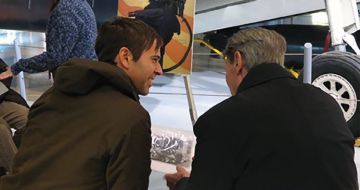
It’s important to recognize that diversity is a natural thing: we are all different; we all live on some spectrum of experience, background, abilities and more. And each person is on many spectrums. Someone with a disability also belongs to a particular race or ethnic group and is of a particular economic status. These metrics apply to each person. Every individual with, for example, vision loss is going to have a unique experience. It’s important to bear this in mind when you create programming or think about accessibility and inclusion goals for your institution.
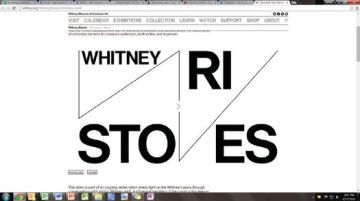
This ideal of inclusion is something that we have to actively create. Inclusion doesn’t necessarily happen naturally, and it takes a group effort. One person can make a big difference, but you need help from others.
Visualizing a Visit
Take a moment and think of any event that you have attended within the last three to six months, whether it was at a museum, gallery space or sports arena. How did you find out about it? Did your friend tell you? Did you find it on a website? Did you see a flyer? And then, how did you get there and what was it like to approach that event space? Whom did you encounter? How did you know where to go once you were there? From that overall experience, think of a memorable moment, whether it was the best or the worst. Finally, when it was all over, how did you go back home?
Now re-imagine that experience as if you had a physical, cognitive, visual, hearing-related, social-emotional or memory-related disability. Start from the top. How would you find out about that event? How would you get there, and how would you know where to go once you arrived? What would be your memorable moment, and how would you get home?
This is a powerful exercise. From it we have identified four major areas in which museums might face challenges in creating accessibility: communication, environment, collections and social opportunities. For each, we have included stories from individuals with varying disabilities about what they need from cultural institutions during their visits, and how impactful an experience can be with or without accommodations. We also provide examples from museums that have overcome each challenge and become more inclusive as a result.
Communication
Communication includes letting people know what amazing programs you’re setting up for a particular audience, or for any audience. But it also involves communicating within your museum. If you have a particular opportunity available for someone with a disability and they come in and your front-line staff is not aware of it—or winds up trying to figure things out while the visitor waits—it can be disconcerting. It’s not the most welcoming environment. It might make visitors feel like they’re being a burden, or set apart.
The style of communication is also important. “Guides will always be better off with folks on the spectrum by being specific and avoiding euphemisms, soliloquies, figures of speech,” said Michael John Carley, founder of GRASP Network for adults with Asperger Syndrome, at a professional development workshop organized by the Museum Access Consortium. “When I was a kid and heard, ‘Let’s toast the bride and groom,’ I had nightmares for two weeks.’”
There are so many nuances, including body language and facial expressions. Sarcasm can be really hard. One form of communication will not work for everybody. There needs to be a range. You need to know your audience, or at least be sensitive to the fact that you don’t know your audience. Try and gauge how they’re responding to what you’re saying or not saying.
Communication also takes place among your audience members. A visitor who has an awkward experience coming to a museum might say to somebody else with similar potential for experiencing barriers, “You know, I had a really tough time there. Just be aware of that.” Someone in that community might be less likely to go if another member had a difficult experience.
Inclusion At The Museum: Communication
At the Whitney Museum of American Art in New York City, programming, resources, and staff training help visitors who are deaf feel welcome. Even the guards know a little bit of sign language so they can say “Hello, how are you?” or “Thank you, have a nice day.” The museum has developed Whitney Video Blogs, or vlogs—short videos featuring deaf museum educators communicating in American Sign Language. The vlogs give people an opportunity to access the museum without being physically present.
Environment
Museum spaces come in all shapes and sizes. One thing they usually are not is traditional. There’s something interesting or different. They can be big, crowded or unusually shaped. They can have noise levels that you might not encounter on a day-to-day basis. They’re special environments, and we have worked hard to create them that way. Knowing what to expect from that initial moment when you walk into the museum can be really helpful.
At a focus group related to mobile technology and accessibility for visitors who are blind or have low vision, Art Beyond Sight asked, “What would you like to know before you go to a museum?” One visitor to a certain museum responded, “The thing that’s always missing is how you negotiate [the space] when you get there. That’s where the anxiety comes in … especially if you’re not familiar with it. And the people who work there are not trained, tuned out, care less. They have no idea how to greet you, how to treat you. It wouldn’t take much for everyone to be trained to see a white cane and say, ‘Can I help you? Do you know where you’re going? Would you like directions?’” She explained that while she had no qualms about traveling internationally on her own, the anxiety about that initial welcome was enough to prevent her from visiting museums alone.
A museum can provide information, perhaps on the website, to give people an idea of what to expect. This would be helpful not only for people who are blind or have low vision but for anyone who might have some anxiety. That’s related to both communication and creating an environment where people will feel welcome.
Inclusion At The Museum: Environment
The Intrepid Sea, Air & Space Museum offers Early Morning Opening programs for children with autism. The museum is not normally a quiet environment, so the initial challenge was finding ways to change it. Individuals with autism can have a tendency to wander and run, and that can be a risk and concern for many families. How can you alter an environment to make it safer? By opening the museum early for these families, there are no loud crowds, wait time is reduced, exhibition lighting and sounds are controlled, and it can be much easier to track a child who is running. There’s a no-judgment environment with the families because everyone is experiencing something in their own way. All the families are not the same, but they seem to understand each other.
Collections
Museum visitors who are blind or have low vision sometimes say, “I never thought there was anything for me at a museum, because everything is so visual.” Making your collections accessible to people who perceive and learn in different ways opens your museum up to an entirely new audience and can alter assumptions.
Some museums permit visitors to touch certain artifacts in a controlled setting—while wearing protective gloves, for instance, and under the supervision of museum staff. Even if you don’t have artifacts or a collection that visitors can touch, there are other steps you can take to make your collection more accessible. For visitors who are blind or have low vision, describing things verbally is important. Instead of just talking about the history of the object, use visual language to talk about what it looks like. This approach is helpful not only for visitors who are blind or have low vision but for any audience as a way to highlight certain elements of an object or artwork.
Providing objects that can be touched can also enable visitors who are blind or have low vision to engage more deeply with your collection. Even if you don’t have historic or authentic objects, you can be creative if you have 3D printers. You can find examples of different materials to highlight an artistic process or a historical context. Objects that are meaningful and purposeful can enhance and enrich the experience and can be easier to find than you think.
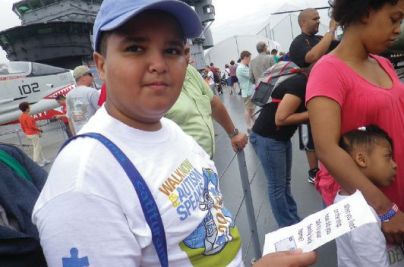
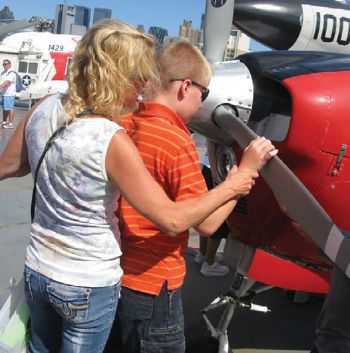
Making your collections more accessible to all kinds of audiences and learners involves a multisensory, multimodal approach. Think about interesting sounds that might be relevant to an object that you’re talking or teaching about. Consider interactive or visualization activities. Anything that can make the experience a little bit more interactive—while still being on point, on mission and relevant—can make it more accessible, and not just to people with disabilities. Kinesthetic learners might identify with an object if they can physically imitate a pose or an action. For someone with memory loss, singing songs from the time period of a painting could be a positive experience.
Inclusion At The Museum: Collections
MoMA’s Art inSight program is held monthly in the galleries for individuals who are blind or partially sighted. Specially designed lectures highlight specific themes, artists, and exhibitions, engaging participants through extensive verbal descriptions. “Art is explained in a way that I can see it. And that’s an experience that I haven’t had before,” said one participant in a video about the program. “And since I discovered the accessibility of the museums, I have been able to appreciate art, which I never could before. Today, we felt a Matisse sculpture. I mean, who in the world would think that anybody could ever feel a Matisse sculpture? For just me, to be able to feel Matisse … thrilling!”
Social Opportunities
Museums have social value and are social experiences. They can provide social opportunities for people who may otherwise be isolated. (This is not to say that people with disabilities are always isolated. People with disabilities have diverse active lives.) The social aspect of museums is just as important for audiences with disabilities as it is for anyone else. And the social experience of some of these group activities is going to be just as important for their care partners.
The goal is for visitors to feel like that the museum is their museum—and that they’re not alone. A lot of the families who attend the Intrepid’s Access Family programs for children with autism, for example, have created their own support system. The museum thereby helps create a network outside its walls.








